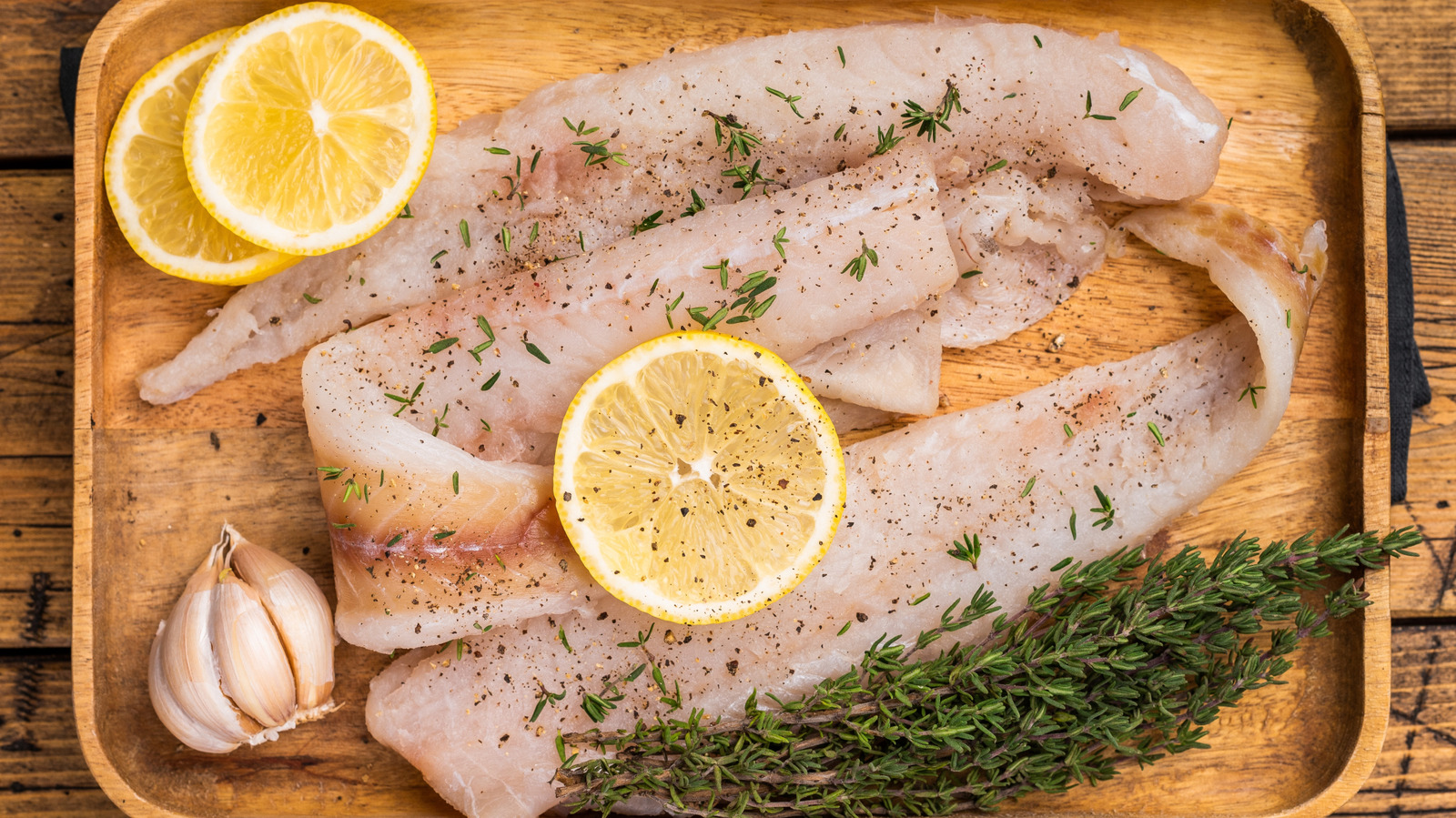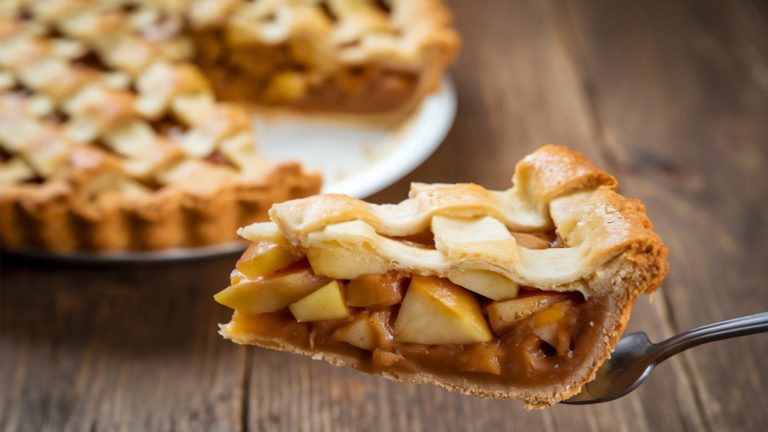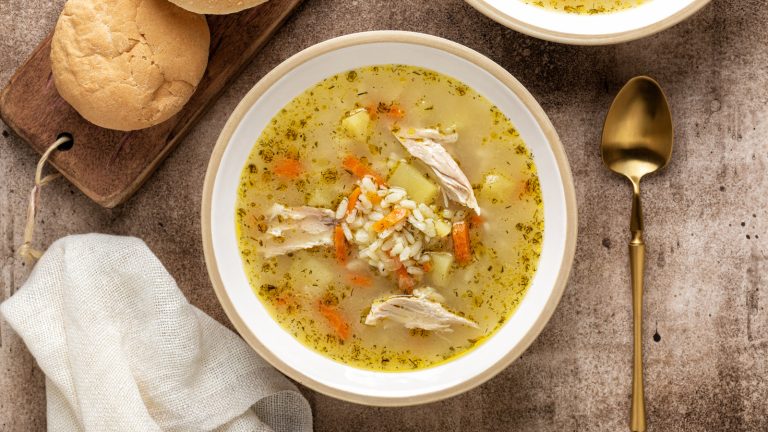We may receive a commission on purchases made from links.
Hake is not the most popular fish in the United States, but that’s mostly because it’s not as well-known as common American go-tos such as salmon, tuna, cod, or tilapia. Ignoring the possibilities of this tasty white fish is a mistake, however. “Hake is an abundant species caught domestically, and it’s generally more affordable than similar groundfish like cod,” explains Max Harvey, VP of Procurement for Wulf’s Fish. “It’s gaining popularity with U.S. chefs because it’s available all year.” You can even get hake roe in cans if you’re feeling adventurous.
As if that’s not enough reason to get it into your kitchen right now, it has a subtle sweetness and a delicate texture that are ideal for light and healthy dishes. “It’s a perfect starter fish for little seafoodies or those just venturing into the seafood world,” says Rima Kleiner, the nutritionist behind the popular seafood blog Dish on Fish — and if you couldn’t tell, also a mom. But it’s not just kiddos that can benefit from hake in the diet. “Most Americans eat far too little seafood and don’t meet the recommended two to three servings each week. Hake is a delicious way to get closer to those weekly seafood meals!”
However, says Julia Chebotar, a private chef at Health Chef Julia and Food Network’s “Chopped” champion, hake’s “tenderness means it’s easy to break or dry out if you don’t give it the TLC it deserves.” So while it’s not difficult to cook and is a great cheap fish to buy, you have to avoid several mistakes if you want to get the most out of it.
Choosing low-quality hake
Hake is an inexpensive fish, so there’s really no reason to get a low-quality version from the store. If you want to avoid this mistake, there are several characteristics for which to look (which apply generally to all fish).
“Freshness is key when it comes to hake,” Rima Kleiner says. “Look for firm, translucent flesh and a mild, fresh-sea smell. Avoid fish that appears dull, slimy, or has a strong fishy odor. If buying frozen, ensure it’s properly sealed and free of ice crystals, which indicate freezer burn.” You also want to avoid any fish that is discolored, says Robert Smith, a private chef at Culinary Collective Atl. Fresh hake flesh will be an even light pink, similar in color to cod or tilapia.
The best way to get good fish, Max Harvey says, is to go directly to a knowledgeable fishmonger. Ideally, he adds, you want to buy hake fresh, which will maximize its delicate texture. Make sure to check for shiny fillets, but eschew anything that has water leaking out.
Thawing incorrectly
Many people make the mistake of thinking frozen fish isn’t worth it. However, Rima Kleiner says, that’s not true. “Seafood is frozen when it’s fresh, so all the great nutrition we’ve come to rely on — protein, vitamins and minerals — is locked in,” she says. “That means whenever you shop at the frozen seafood case, you’ll always have a healthy and delicious seafood meal at the ready. It’s like money in the bank!” Seafood in the freezer can last up to 6 months, she says, so it’s good to keep a variety on hand. The only thing is, you have to thaw it correctly.
“To thaw, place the frozen fillets in the refrigerator overnight, or for a quicker option, seal them in a plastic bag and submerge in cold water for about an hour,” Robert Smith says. “Avoid thawing in warm water or microwaving, as this can compromise the texture.” And, Julia Chebotar adds, never let it sit out at room temperature. Not only is this bad for texture, but it can also breed bacterial growth, which can lead to food poisoning.
Do note, says Max Harvey, that hake really isn’t the best fish to buy frozen. Freezing, he says, compromises both texture and flavor. The exception is when you buy too much fresh fish and need to store it. “Dredge it in a flour and cornmeal mixture and freeze it coated with wax paper or parchment between the layers of fish. This works particularly well with thinner pieces from close to the tail end of the fish. When you’re ready for it, pan-fry it from frozen for a great fish sandwich.”
Prepping inadequately
Next up on our mistake list is going about prepping your fish the wrong way. “Failing to properly prepare the fish can lead to uneven cooking,” Robert Smith says. “Make sure to remove any skin or bones if necessary, and pat the fillets dry with paper towels to ensure a good sear.” That last step is seriously important, Julia Chebotar stresses. “Water = steam = mush,” she says. “Always dry it well before seasoning.” If you have a hard time getting pin bones out, you can try specialty Fish Bone Tweezers, which give you a lot of finesse without compromising grip. Lastly, Rima Kleiner says, you should “trim uneven edges to ensure even cooking.”
Note that even if you’re going to cook your hake using a method that traps steam, such as baking it in parchment paper, make sure you first dry it well. Removing that excess moisture helps seasoning adhere to the flesh of the fish, which will lead to a better result.
Forgetting to season before cooking
It’s tempting to throw your fish in the pan and worry about seasoning later, but that’s a mistake with hake — and with fish in general. When you season with salt, you not only lock in more flavor, but it helps to firm up the fish so that it holds its shape during cooking. You need to season long enough before cooking that it has time to absorb, Julia Chebotar says, about 10 minutes before you plan to cook it. The type of salt matters, she adds; Maldon Sea Salt Flakes are her seasoning of choice. Robert Smith advises against getting too wild with the seasoning. “Use simple seasonings like salt, pepper, and a squeeze of lemon to enhance its natural taste without overwhelming it,” he says.
You needn’t limit your seasonings just to a fillet, though. For example, famously inventive chef Martha Stewart even turns hake into burgers. She simply dices the fish, combines it with bread crumbs, eggs, mayo, capers, and seasonings, and cooks them up before serving with mustard mayo and pickled red onions. If you don’t feel like making your own, try Jeff’s Garden Pickled Red Onions. You can even serve the resulting fish cake for breakfast, accompanied by eggs or another morning food of your choice. Point being, season well.
Oversalting
Just as you don’t want to season too lightly, it’s also a mistake to overseason your fish, which can happen quickly. “Oversalting can mask the hake’s subtle taste,” Rima Kleiner says. Don’t add salt too long before cooking, she says, “and avoid marinating it for too long in salty mixtures. This will keep the fish from becoming overly salty or rubbery.”
If you’re not sure how much salt to add and your recipe doesn’t offer clear guidelines — for instance, “to taste” is a common instruction — then start with a small amount and adjust to taste after the hake is done, Robert Smith says. You can always add more, but you can’t correct it after the fact. The same goes for other types of seasoning, such as pepper, which can quickly go from a piquant dusting to a bitter coating.
Overhandling
Another common mistake with this fish is to handle it too much. “Hake is quite fatty for a whitefish, so it’s delicate,” Max Harvey explains. “You don’t want to try to do too much with it or you risk it flaking apart. When handled gently, it’s a great option.”
To avoid overhandling the fish, make a game plan before you start cooking. Set out paper towels and transfer the fish to them right after you unwrap it. (You can also rinse it gently under cold water before you dry it, Rima Kleiner says.) From there, season it and let it sit for a bit, then move it directly into the hot pan. If you take these steps, you’ll minimize the amount of time it spends warming up in your hands as well as the amount of time you have to support it while airborne. Airborne hake: not the goal.
Not heating the pan before cooking
Remember, hake is not a particularly difficult fish to cook, but it does require some attention to detail. “The key is to treat it gently and pay close attention to cooking times and techniques,” Robert Smith says. This starts with heating the pan. “If the pan isn’t hot enough, the fish will stick and not sear properly. Preheat your pan before adding the fish for a beautiful crust.”
Make sure, too, that the pan is at the right temperature. Too low, and the exterior won’t crisp and brown nicely. Too high, and it will scorch. “For searing, the pan should be hot but not smoking,” Rima Kleiner says. “This helps create a nice crust without burning.”
Both the Cuisinart 722-30H Chef’s Classic Stainless 12-Inch Open Skillet and Lodge 10.25 Inch Cast Iron Pre-Seasoned Skillet are good options. But remember, cast iron is very sticky until it’s well-seasoned. Even pre-seasoned pans still have a rough surface that can pull apart a delicate fish. Make sure you don’t use a cast iron pan unless it has the glossy surface that can only come from many layers of polymerized oils. For many home chefs, that will take a few years of regular use, though you can hit your goals faster if you use it daily to cook less sticky items that require fat or oil. Think veggies, mushrooms, pancakes, Dutch babies, or cornbread, for example.
Adding too little cooking fat
Another common mistake when cooking delicate fish such as hake? Using too little fat. “A dry pan will tear delicate fish. Hake needs a generous, even layer of fat,” Julia Chebotar says. “I love extra virgin olive oil for its flavor and moisture, or avocado oil for high-heat sears. For more richness, a butter-olive oil mix works beautifully — just don’t let the butter burn.”
Robert Smith also prefers the olive oil and butter blend. “Olive oil provides a nice flavor and helps achieve a good sear, while butter adds richness and depth.” In general, he says, a tablespoon of each should do the trick. If you’re just baking the hake, says Max Harvey, then butter alone is enough, because you can trust it won’t burn in the oven like it would in a pan. You can even use buttered bread crumbs.
Plus, Rima Kleiner says, butter is best for achieving a rich, golden, and crispy exterior. If you’re worried about burning but want that same buttery flavor, try ghee. Or you can go with canola or other neutral vegetable oils. “These work well for frying or roasting at higher temperatures since they don’t interfere with the natural taste of hake.” Depending on the qualities you’re looking for, BetterBody Foods Refined Non-GMO Avocado Oil, Pompeian Smooth Extra Virgin Olive Oil, and Amazon Brand Happy Belly Canola Oil are all good options to try.
Not using a recipe
Although you needn’t adhere militantly to a recipe once you’re comfortable cooking fish, make sure to cleave pretty closely. For instance, it’s a mistake to swap types of fish in a recipe if you don’t really, really (really) know what you’re doing. Moisture, consistency, and timing can all throw you off. That said, your hake recipes don’t have to be super complicated. “A simple pan-seared hake is one of my favorites,” Robert Smith says. “Season the fillets with salt and pepper, heat a skillet with olive oil and butter over medium-high heat, and add the fish, skin-side down. Cook for about three to four minutes until golden, then flip and cook for another three minutes. Finish with a squeeze of fresh lemon and serve with a side of sautéed greens or a light salad.” Let’s just say, we’d all go to dinner at his house.
Max Harvey, on the other hand, likes to coat his hake in a flour and cornmeal dredge, then pan-fry it in olive oil and butter. Soups and chowders are also good opportunities for this delicate white fish, he says, “but you need to be careful to add the hake after you’ve developed the flavors of the soup and let it cook gently in the hot broth.” Then, he adds, you must serve it immediately.
To keep her fish super moist, Rima Kleiner likes to cook it in foil. Place it in the foil, drizzle olive oil over the top, toss in some herbs (fresh and dried are both one), and squeeze in some lemon. Wrap the foil loosely around the fish and cook.
Using a spatula that’s too thick
Although this writer hates to sound like a broken record, she can only faithfully convey what she hears from the experts, and what she’s hearing is: Hake. Is. Delicate. It only takes one mistake for you to turn a beautiful fish fillet into a fish salad, in which case, you’d better hope fish salad is what you were planning to have for dinner, because there’s no going back. Accordingly, you need the right tools to ensure you’re able to treat it gently, and your standard spatula just won’t cut it.
“When cooking hake on the stovetop, it’s best to use a fish spatula,” Rima Kleiner says. “This type of spatula is thin, flexible, and slightly angled, making it ideal for sliding under delicate fish without breaking it. The slotted design also helps drain any excess oil or cooking liquid as you lift the fish.” Julia Chebotar prefers the All-Clad Precision Stainless-Steel Slotted Flex Fish Turner from Williams Sonoma. If you want an Amazon option, try the Zulay Kitchen Fish Spatula.
Flipping more than once
Hake is a delicate fish and cannot withstand a lot of movement in the pan, so it’s a mistake to treat it like a mushroom or piece of broccoli. If you mess with it too much, Max Harvey says, you risk it falling apart completely. Once you put it in the pan, leave it alone.
Julia Chebotar is a little more direct in her advice: “Set it down and don’t touch it! Let it naturally release when it’s ready to flip. I only flip once — any more and you’re risking a mess.” What does it mean to “naturally release”? The fish will form a crust on the bottom that will unstick itself to the bottom of the pan. You can tell it’s happening when golden edges start to creep up the side of your fillet, she says.
Overcooking
Easily the most common hake cooking mistake that makes a huge difference to the texture and flavor, second only to forgetting to dry it off, is overcooking it. “Hake cooks quickly, so keep an eye on it,” Robert Smith says. “Overcooked hake can become dry and lose its delicate flavor. Aim for a cooking time of about three to four minutes per side, depending on thickness.”
However, you don’t want to blindly obey the cooking time recommended by your recipe. As Smith says, fillets are all different in thickness, so it’s good to learn a few tricks to tell when it’s done. “Aim to cook it just until it’s opaque and flakes easily with a fork,” Rima Kleiner says. Because it can be hard to tell when something is “done,” she recommends you use a food thermometer and remove it from the heat as soon as it hits an internal temperature of 145. The ThermoPro TP03B Digital Meat Thermometer has a mind-boggling 133,000 reviews with an average star rating of 4.6, so you’re probably safe picking that one if you need to re-up your kitchen thermometer or get one for the first time.
Serving it plain
Hake is a nice fish with a delicate flavor, but it can be a little plain if you don’t dress it up, which is a mistake. Think about what you want to serve it with ahead of time and put the necessary ingredients on your shopping list along with the fish. “It’s a mild fish, so you’ll want to plan a flavorful accompaniment, like a tapenade,” Max Harvey advises. Or, Robert Smith says, you can pair it with complementary sides, such as roasted vegetables or a bright citrus salad. This, he says, can elevate the dish even further.
Rima Kleiner enjoys hake with all types of veggies and grains. Just make sure your flavors are light and bright and won’t overpower the sweet and delicate flavor of the fish itself. As for Julia Chebotar, she likes her hake “pan-seared with olive oil, garlic, lemon, and a little white wine to steam it gently at the end. Serve over garlicky greens or a warm bean salad — it’s light, protein-rich, and layered with flavor.”





